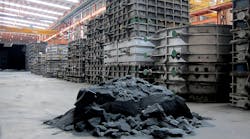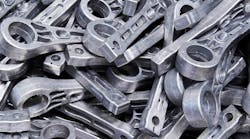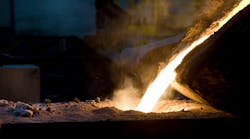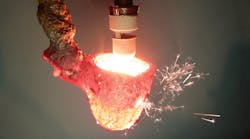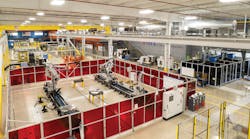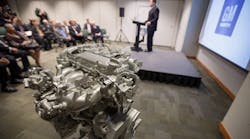Together, the Center for Heat Treating Excellence at Worcester Polytechnic Institute and GM Global Powertrain Engineering recently earned a U.S. patent for a method for predicting heat-transfer coefficients for metalcastings during quenching and cooling. CHTE said the new technique would make castings more durable.
The title of the patent is “Systems and Methods for Predicting Heat Transfer Coefficients During Quenching."
“We conducted a series of air-quenching experiments, CFD (computational fluid dynamics) analysis, and FEA (finite element analysis) to model and predict temperatures and residual stresses in aluminum alloy casting during quenching," according to Bowang Xiao, Ph.D., one of the inventors listed for U.S. Patent No. 8437991.
Xiao, who had been a Ph.D. student at WPI in Worcester, MA, when the patented methodology was developed, is now affiliated with GM Powertrain.
"Residual stresses play an important role in engine durability performance, and the temperature history calculation for the casting is the key challenge for accurate residual stress prediction,” he continued. “For the first time, we integrated experimental results and CFD analysis into the FEA analysis to accurately and quickly predict heat transfer coefficients and temperature history.”
CHTE is an academic-industrial alliance that addresses problems in heat-treating industry operations by way of collaborative research to address the industry's short- and long-term needs.
GM Global Powertrain Engineering, Pontiac, MI, is a member of the CHTE, which is located at WPI. GM Powertrain funded the research that resulted in the patent, and the work was conducted at CHTE labs and at the GM Global Powertrain Engineering research center in Pontiac, MI.
As detailed by WPI, the research was part of GM’s initiative to model and analyze engines for better durability. “The Center for Heat Treating Excellence has done a lot of work on quenching, and this project was a logical extension of our expertise," according to Richard D. Sisson, Ph.D., a professor of mechanical engineering at WPI and director of WPI's Materials Science and Engineering Program. "It represents the good work of WPI students and faculty and CHTE member companies.”
Along with Xiao and Sisson, the process inventors listed for the patent are Qigui Wang, Ph.D., GM Powertrain; Gang Wang, Ph.D., associate professor at Tsinghua University in China (formerly a research scientist at WPI); and Kevin Rong, Ph.D., professor of mechanical engineering at WPI

